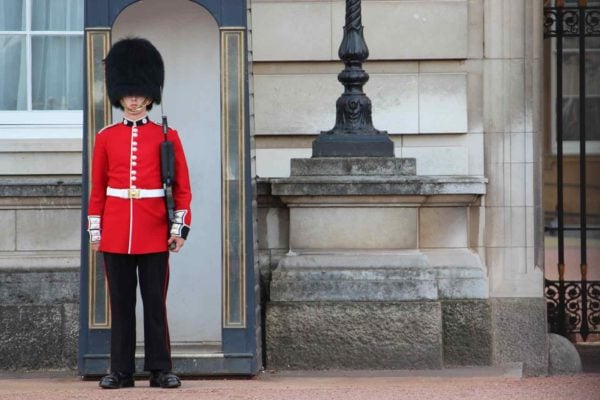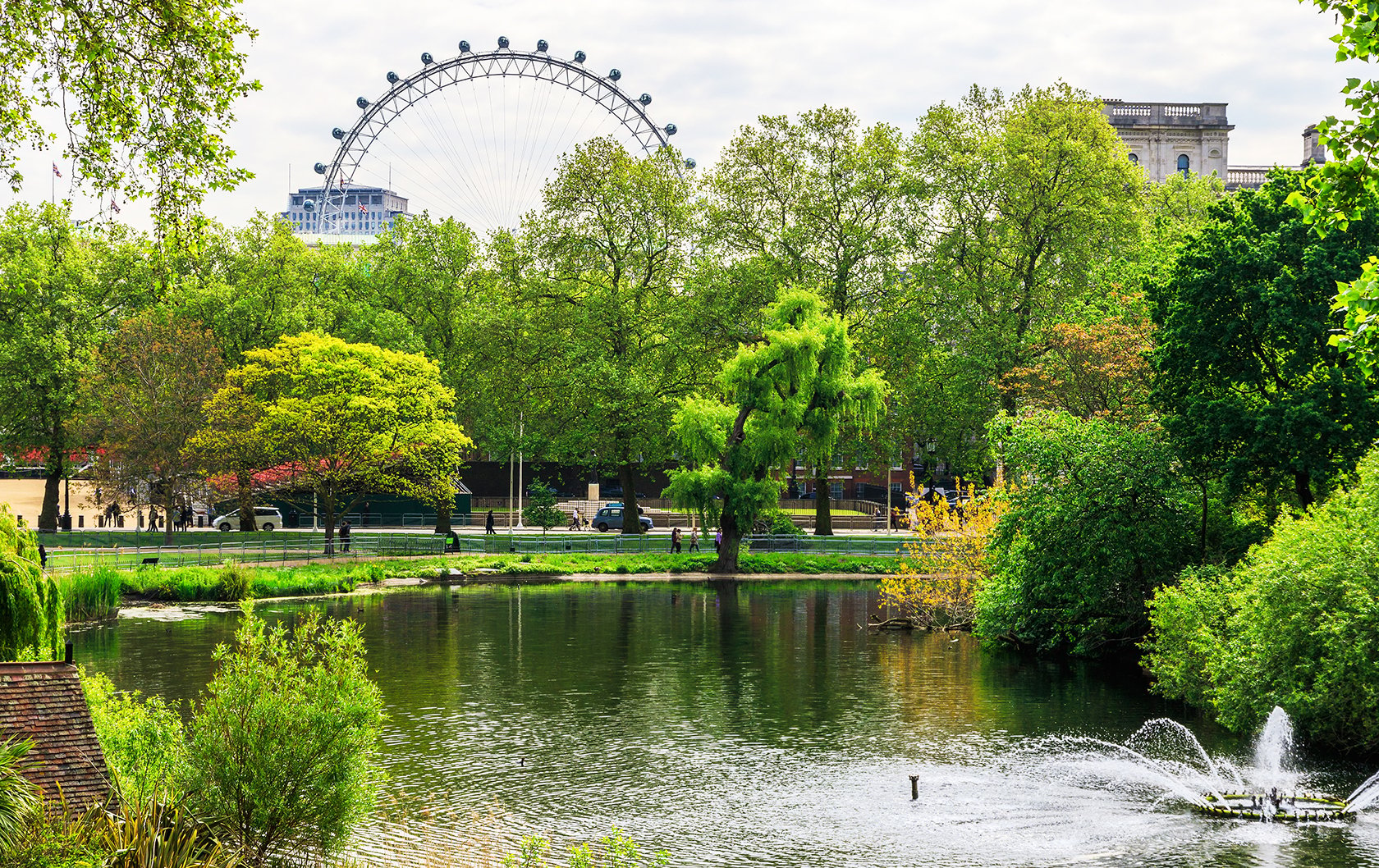
Of London’s eight Royal Parks, St. James’s Park is the oldest as well as one of the most beautiful. While not as large as Kensington Gardens, Hyde Park or Regent’s Park, its setting near Buckingham Palace and St. James’s Palace as well as fine views of Big Ben and the London Eye certainly make it one of London’s most scenic spots. This 58-acre park is situated right in the heart of London yet offers a natural escape with its meandering pathways, a lake that’s home to many species of birds, and splendid flowers that are especially striking in the spring. If your visit happens to coincide with the daffodils blooming, it’s a London experience you’ll treasure for years to come.
St. James’s Park is also where you’ll find The Mall, a tree-lined road that connects Trafalgar Square and Buckingham Palace. Since it’s surrounded by so many of London’s top landmarks, St. James’s Park is the perfect place for a rest or picnic while sightseeing or after seeing the Changing the Guard ceremony. Join us for a stroll through history at St. James’s Park that will enhance your next visit!
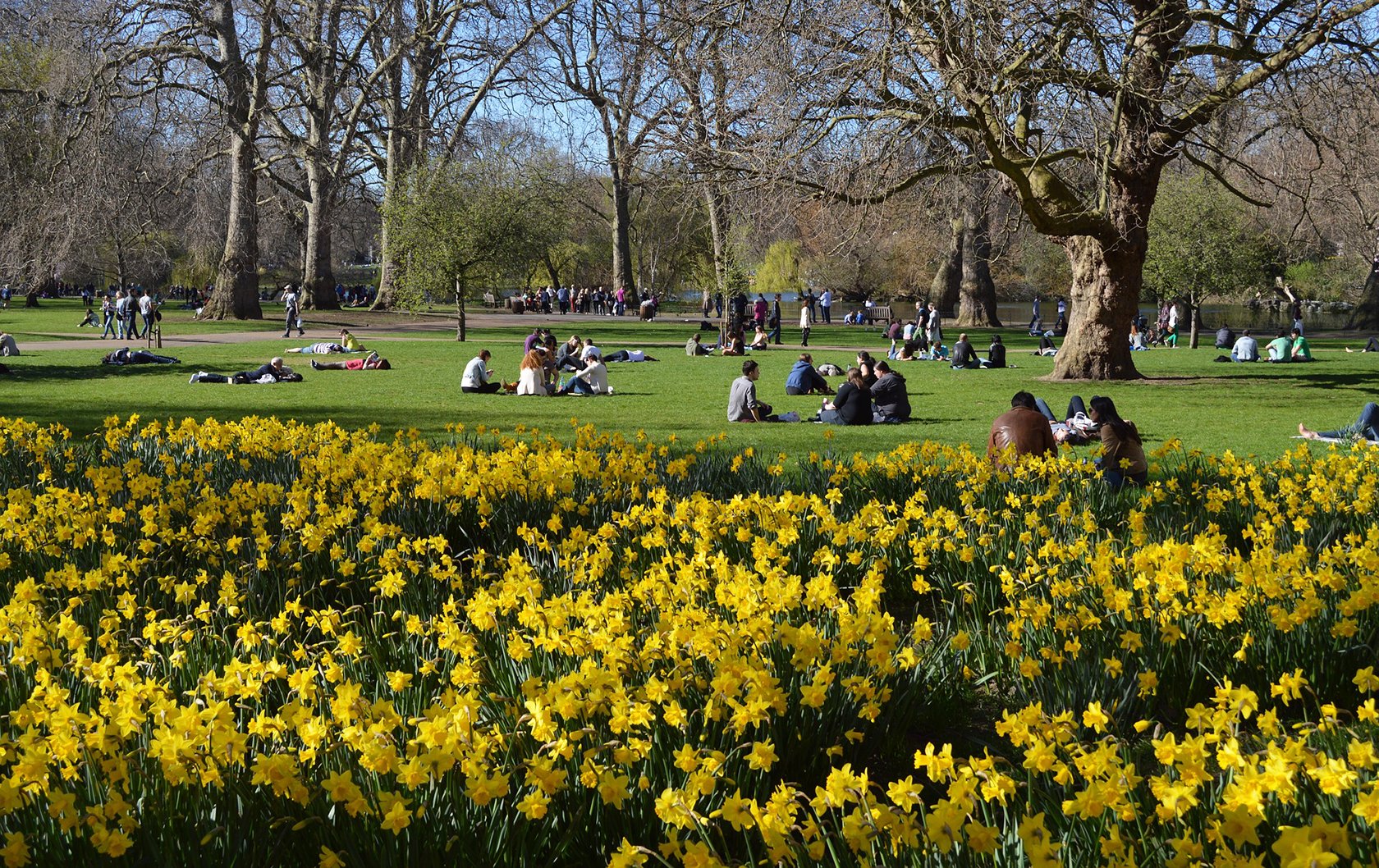
Spring in St. James’s Park full of golden daffodils (Credit)
The origins of St. James’s Park go back to the beginning of the 16th century when King Henry VIII married Anne Boleyn, his second wife, in 1533. The king desired a pleasing park near the relatively new Palace of Whitehall, which was the massive royal residence of English monarchs from 1530 until 1698 when it was largely destroyed by fire. Henry VIII eyed up some nearby fields as the perfect setting for a private park and country home. There was only one problem, which proved to be of little concern for Henry VIII. A leper hospital dedicated to St. James was located on the land, but he had it removed to build St. James’s Palace in its place. The marshy land and entire estate were surrounded by a brick wall so the king could create his own personal deer park and private royal gardens complete with a tennis court, a swimming pond and bowling green.
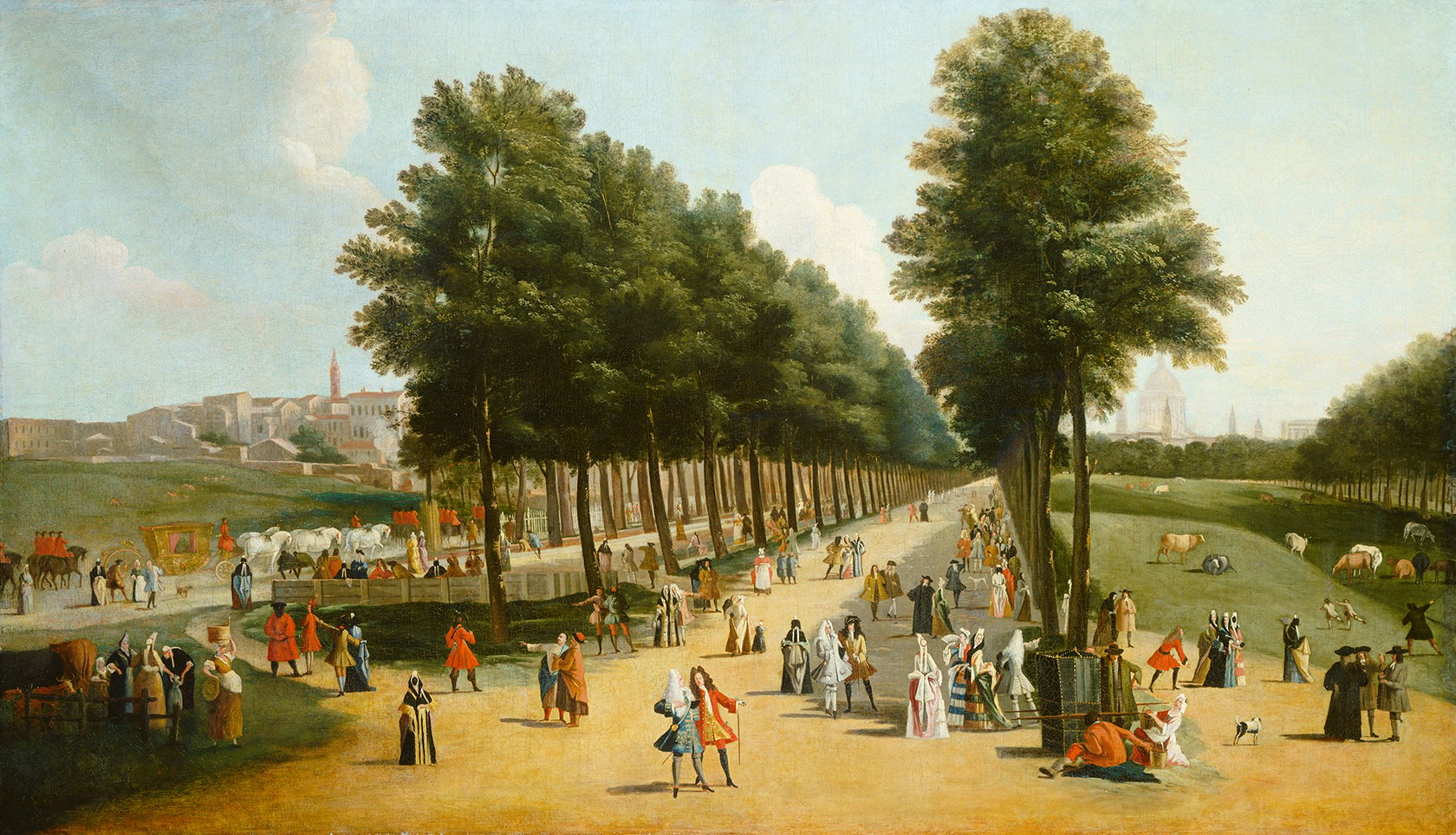
View of the Mall in Saint James’s Park from 1709-1710 (Credit)
At the beginning of the 17th century, King James I added an exotic element to St. James’s Park with the addition of crocodiles, hawks, antelopes, a leopard and even an elephant. Just imagine the sounds that came out of the park in those days! Today the only reminder of this wilder time are the pelicans that still reside in St. James’s Park. There have been pelicans here since the Russian Ambassador gifted two pelicans to King Charles II in 1664. Find out more about them in our guide Where To Find Wildlife In London. It was King Charles II who left a lasting mark on St. James’s Park and began to push the gardens toward the layout we see today. After returning from exile in France, the king wanted grandiose gardens like he had seen at Versailles. Working with French landscapers, the park began the first of many transformations that would take place over centuries.
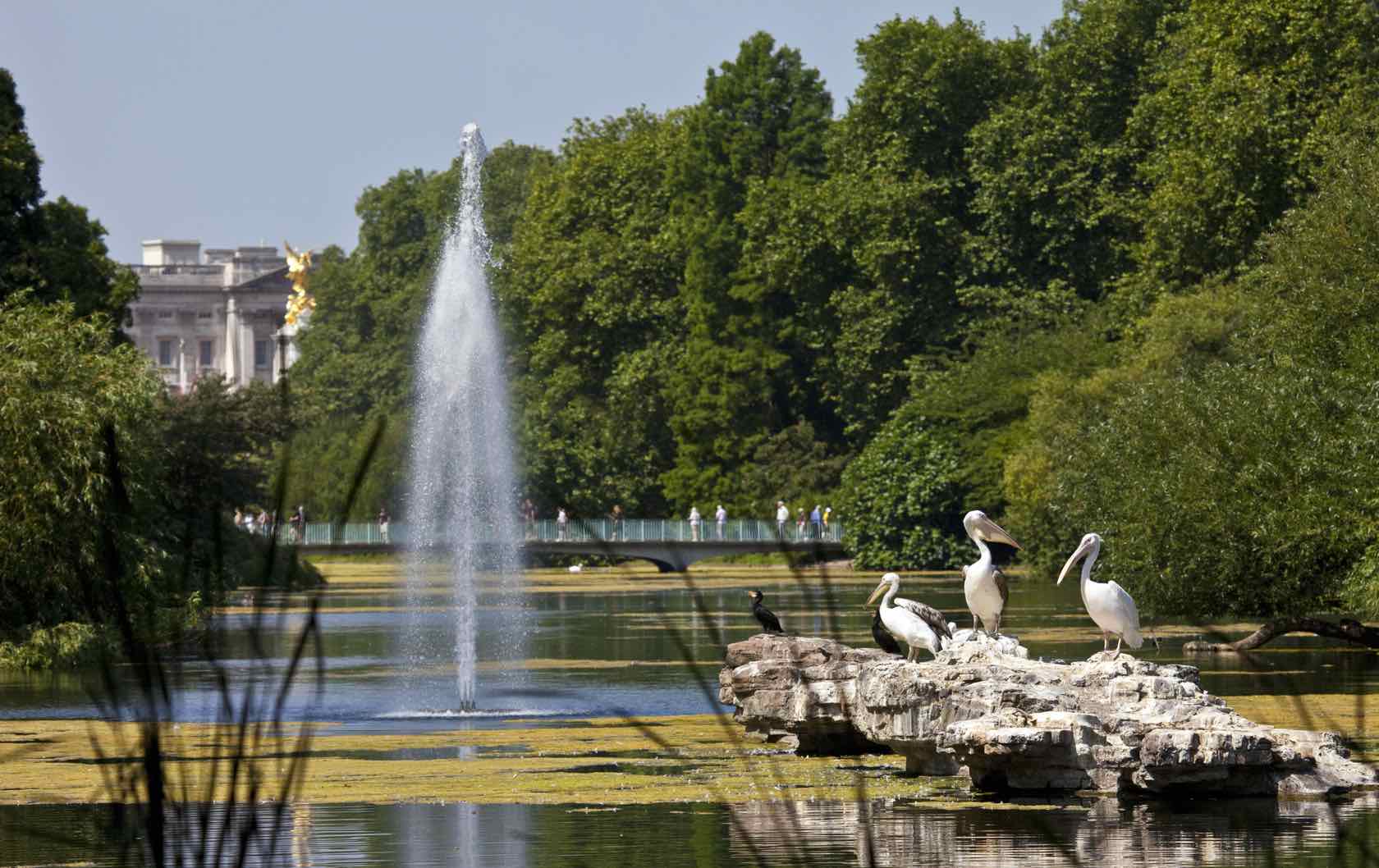
Pelicans at home in St. James’s Park with a view to Buckingham Palace in the distance
Many of the park’s earliest features, like the elegant straight canal lined by trees, have been altered over time. Yet one of the lasting elements from King Charles II has to do with his fondness for birds. Along the southside of the park, Birdcage Walk is named for the king’s aviaries that once stood in this area. At the eastern end of the pond, Duck Island is a small nature reserve and breeding ground for an estimated 17 different species of wildfowl and birds. Along with the pelicans, there are many types of ducks, swans and birds that can be spotted in St. James’s Park. One of the best viewpoints is from the Blue Bridge. Built in 1957, it’s the third bridge to cross the lake and replaced an iron suspension bridge that had been built in 1857. It’s also a great spot to see the Tiffany Fountain, a 20 foot jet of water that shoots straight into the air from the centre of the lake not far from Duck Island.
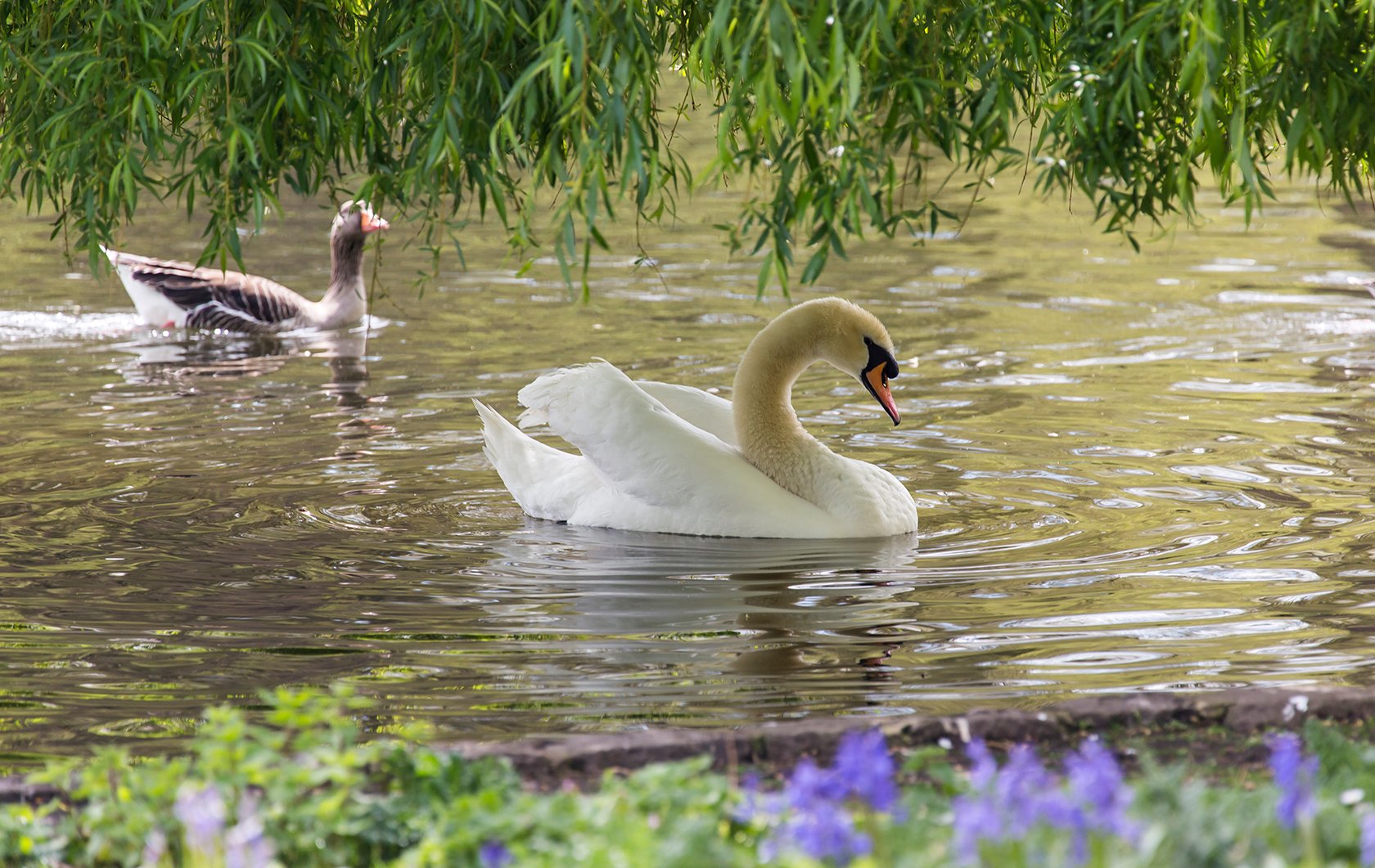
Feathery residents of St. James’s Park (Credit: David C. Phillips)
In 1761, King George III set his eye on the large private estate and elegant townhouse near St. James’s Park that was built for the Duke of Buckingham in in 1703. After becoming a royal residence, it was enlarged throughout the 19th century to become Buckingham Palace as we know it today. It took its place as the London home of the British monarchs when Queen Victoria was crowned in 1837. Also during the 19th century, the government pushed to allow more public access to the private royal preserve at St. James’s Park and by 1856 this was successful. Although still one of London’s Royal Parks, St. James’s Park is open to the public and is the most visited of the royal parks welcoming millions of visitors every year.
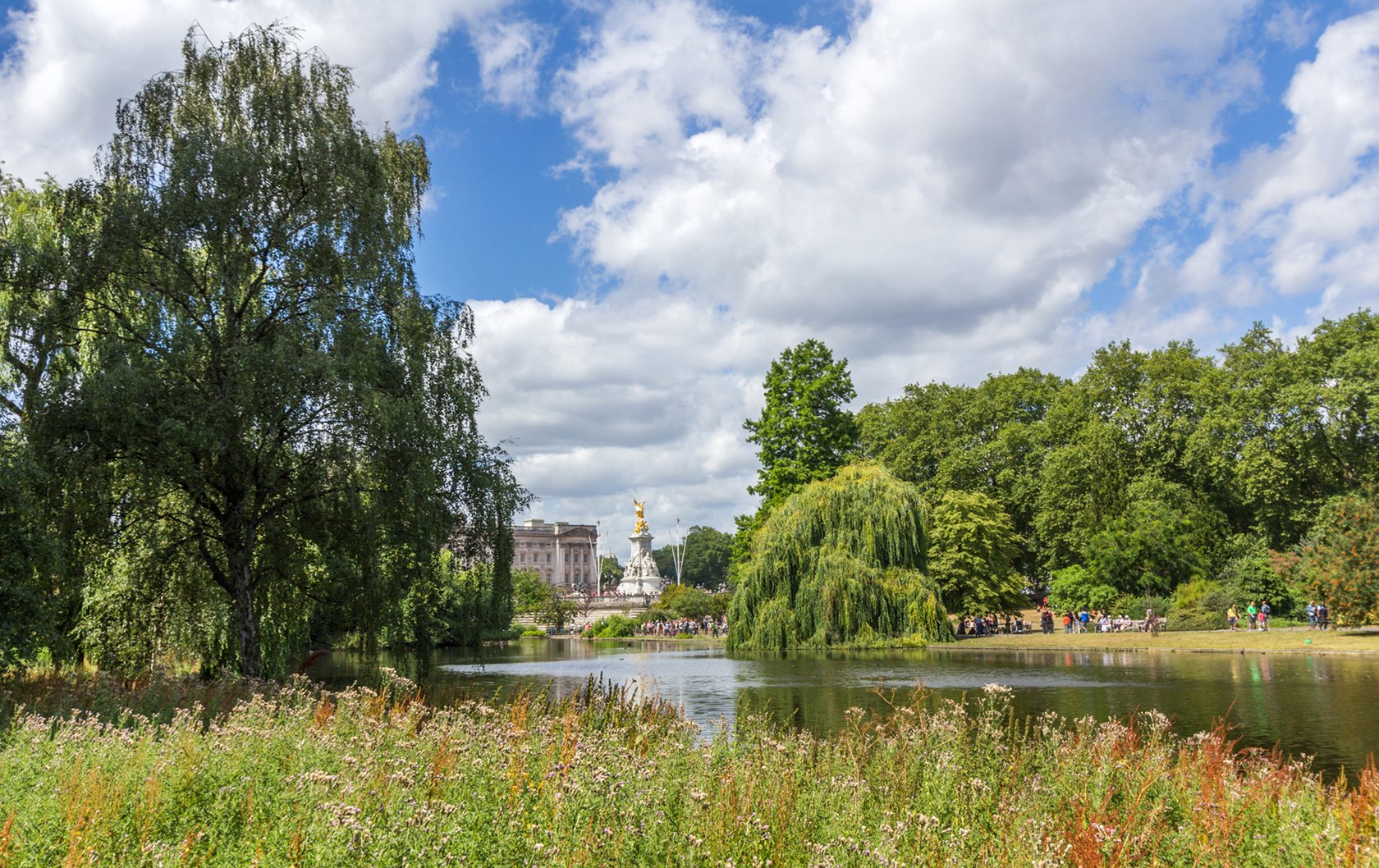
A peaceful oasis in central London
From St. James’s Park you’ll find a perfectly framed view of the East Front of Buckingham Palace with its famous balcony where the royal family traditionally gathers to greet crowds. Just in front is the grand Victoria Memorial topped with a gilded bronze Winged Victory and surrounded by a crescent shaped garden. When built in 1911, the memorial significantly reduced the size of St. James’s Park. Yet it did complete the triumphal processional setting of The Mall and is an excellent spot to watch the popular Changing the Guard ceremony at Buckingham Palace.

The Queen Victoria Memorial and Buckingham Palace (Credit: David C. Phillips)
While The Mall just seems like a busy street today, the long and straight stretch of road is full of history just like the rest of St. James’s Park. In the 17th-century, King Charles II was an avid player of paille-maille, called pall-mall in English, which at that time was exceedingly fashionable in France. The lawn game has origins from Italy in the Middle Ages and was a somewhat more athletic form of croquet. A long pall-mall alley was built for Charles II along the northern wall of the park. However, a road running alongside the wall stirred up enough dust to annoy the king who in 1661 created a grand tree-lined promenade in its place. The original name of Catherine Street didn’t stick and it was generally referred to as Pall Mall and today simply The Mall. It forms part of many parades, national events and ceremonies like Changing the Guard.
Unlike other roads in London, you’ll notice The Mall has a distinctive red color. This is said to give the appearance of a long red carpet when approaching Buckingham Palace. With hundreds of years of royal history that has shaped the park plus the royal palaces nearby, it’s hard to not feel a bit of the royal atmosphere while strolling along The Mall.
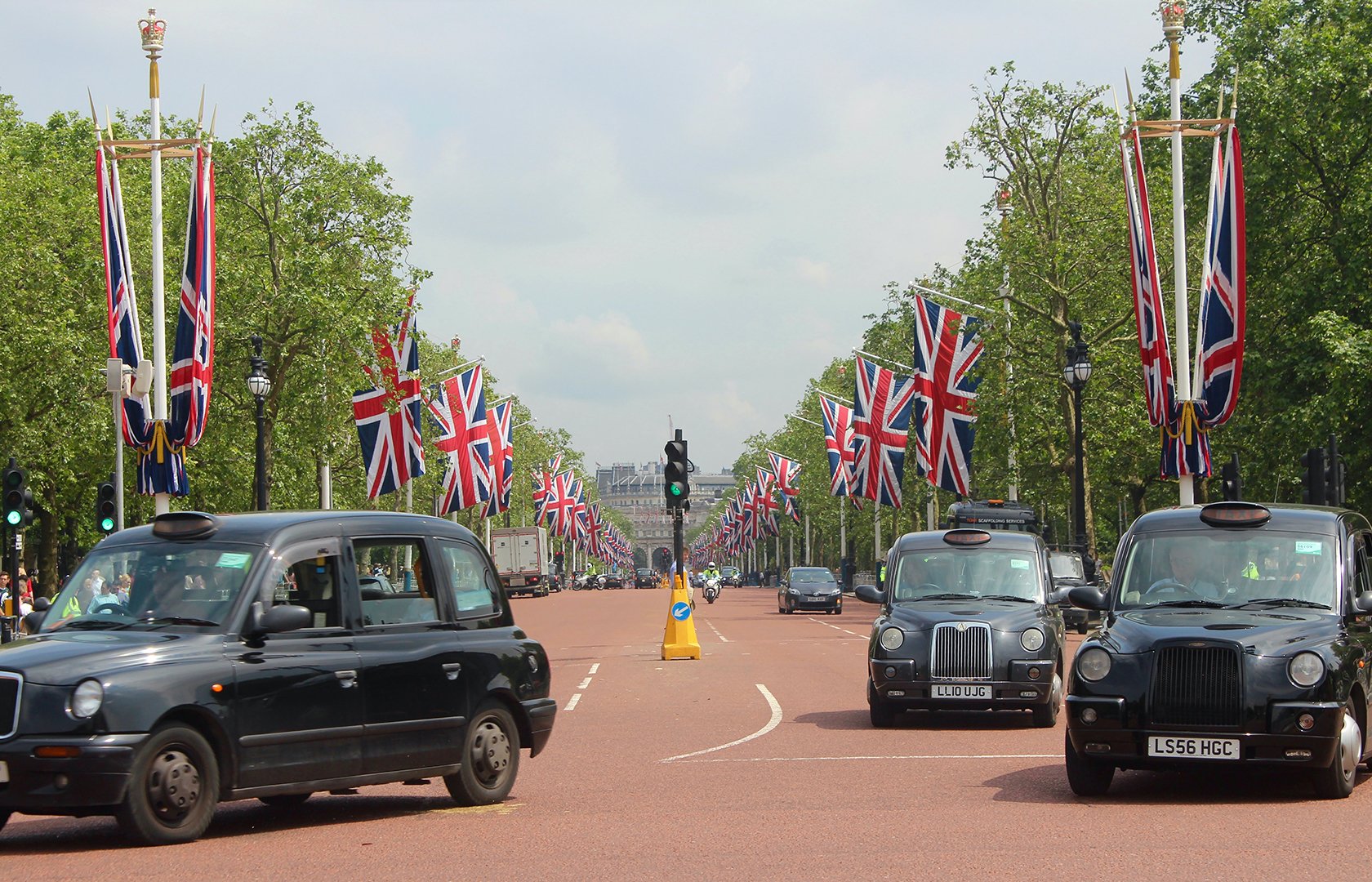
Classic London black cabs on The Mall (Credit)
Whether you’re enjoying a leisurely walk through the park on the way to see the Changing the Guard ceremony or relaxing in the shade on a summer day, looking back over the centuries on all that has taken place in St. James’s Park fills the air with that historic atmosphere that is so particularly London. Be sure to visit and find out for yourself! St. James’s Park is open daily from 5am to midnight. The St. James’s Park website has all the latest updates on events, visiting information and detailed maps.

